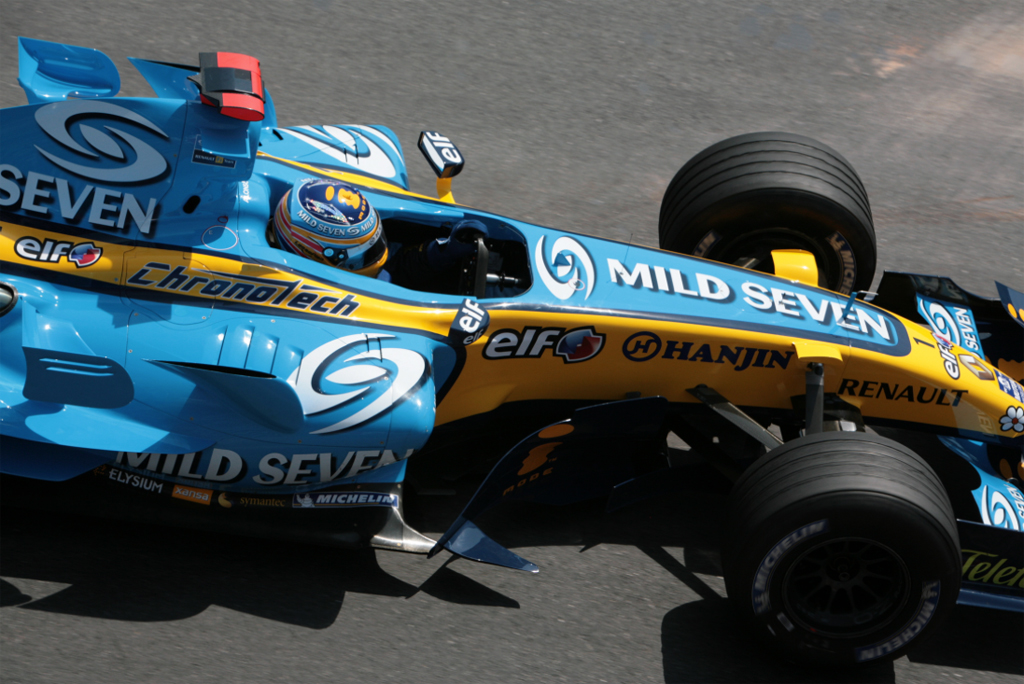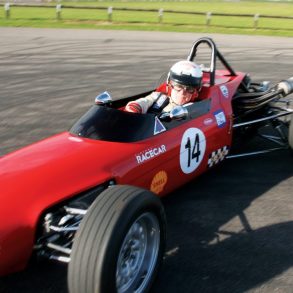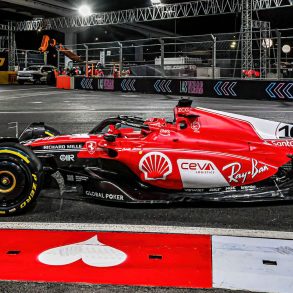Renault R26
Car: Renault R26 / Engine: RS26, Mid-mounted 2.4 litre V8 (90°) / Maker: Renault / Year: 2006 / Capacity: 2,398 cc / Class: Formula 1 / Power: 775 bhp / 578 KW @ 20500 rpm / Wheelbase: 3100 mm / Track: Front: 1450 mm; Rear: 1400 mm / Weight: 600 kg ( including driver and camera)
For 2006 the new regulations required teams to replace their V10s with smaller 2.4 litre V8s though smaller teams will be able to continue with the old engines, subject to restrictions. Other changes to come into force next season include revised bodywork designed to cut downforce, and new tyre regulations whereby each driver may use only one set of tyres to complete qualifying and the race.
The F2002 was not used in the first race of the season. For the Australian and Malaysian Grand Prix Ferrari relied on updated F2001s, but when the F2002 was unleashed at the Brasilian Grand Prix it proved a winner straight out of the box. By the eleventh race, at Magny Cours in France, Michael Schumacher secured his fifth title, the earliest ever in a Grand Prix season. With this title Schumacher equalled Juan Manuel Fangio’s record five World Championships. The 2002 title is Schumacher’s third consecutive title for Ferrari and the Scuderia scored their fourth consecutive constructors’ title.

The RS26 built at Viry-Chatillon was the jewel in the Renault’s crown. The basis for its design was the RS25, but with two less cylinders. The 90° angle of the V8 engine meant that the unit was wider than the 72° V10 used last year. This has led the team to revise the layout of ancillary systems including smaller radiators, in order to maintain a compact rear-end, an important area for aerodynamic performance.
The R26 uses a seven-speed titanium gearbox for the first time, instead of the 6-speed unit employed until 2005. The V8 engines developed less torque than the V10, and as such, a seven-speed gearbox allowed the team to exploit the engine’s characteristics in an optimum fashion. A V-8 had higher vibrations than the V10 and would need to be compensated for.
At the first race in Bahrain Fernando Alonso continued where he left off in 2005 and triumphed over Michael Schumacher. In Malaysia he was beaten by Fisichella but was able to recover in Australia. Michael Schumacher in what would prove to be his last season before his short retirement from the sport won at Imola and again at the Nurburgring. Alonso would win the next four races opening up a 25 point lead in the drivers title before Schumacher was able to close the gap with three straight victories of his own. Jenson Button in a Honda and Felipe Massa in the other Ferrari won the next two races in Hungary and Turkey. For both drivers it was their maiden victory. The standings stood at Alonso having 108 points and holding a 12 point lead over Schumacher with his teammate another 34 points in arrears. But things would soon change for the worst for Renault.
On August 23rd the FIA International Court of Appeal ruled Renault’s mass dampers illegal. They cited article 3.15 of the Formula One Technical Regulations – claiming the system constituted a moveable aerodynamic device. Renault claimed the loss of the system cost them 0.3s per lap. With two victories for Schumacher at Italy and China the championship was now tied at 116 points each. With two more races remaining Alonso was able to win in Japan and come in second at the season ender in Brazil earning him his second title running. Over the final races of the season Ferrari were decisively faster than Renault, yet the French team still persevered in constructors championship as well.


















